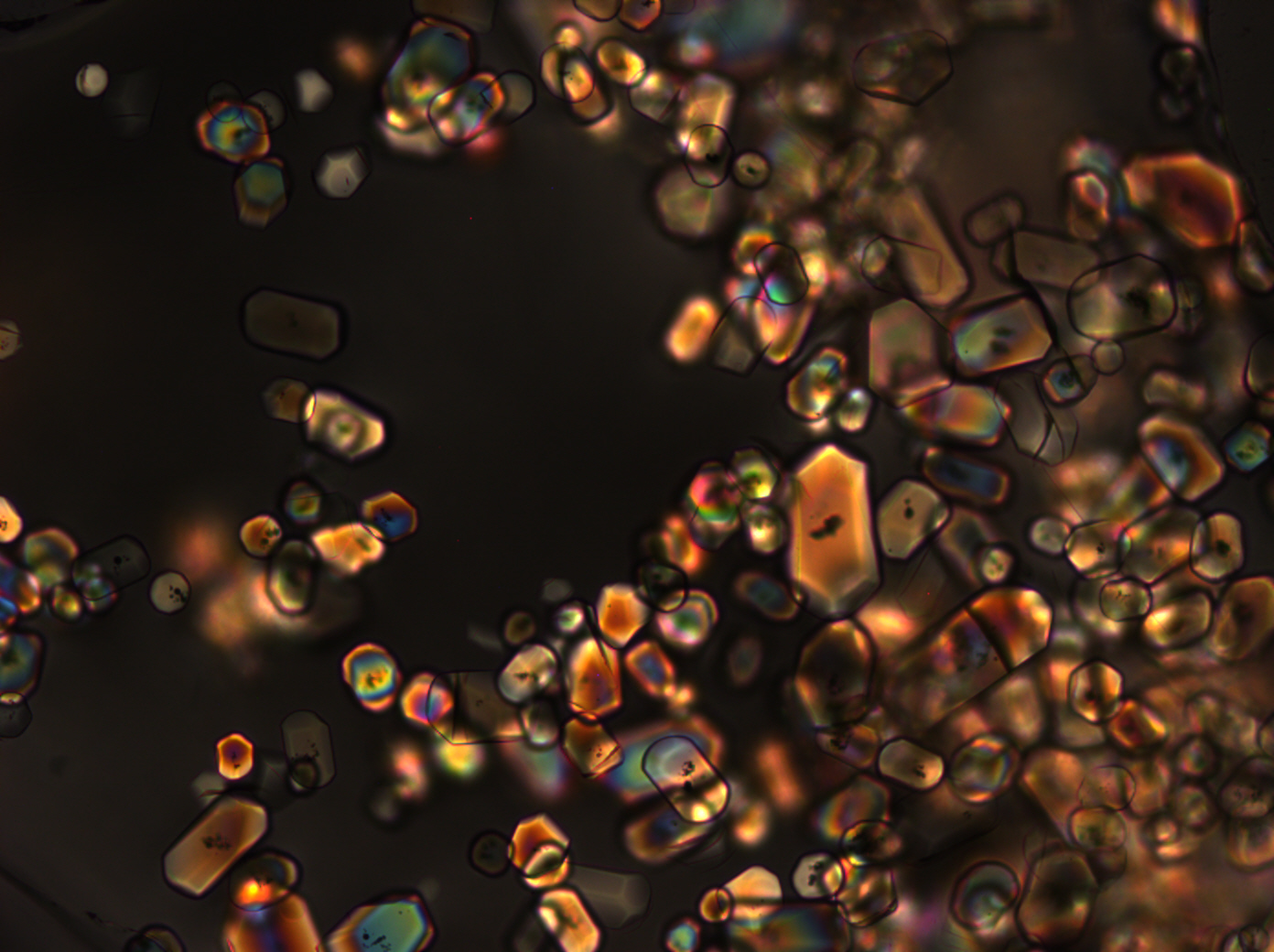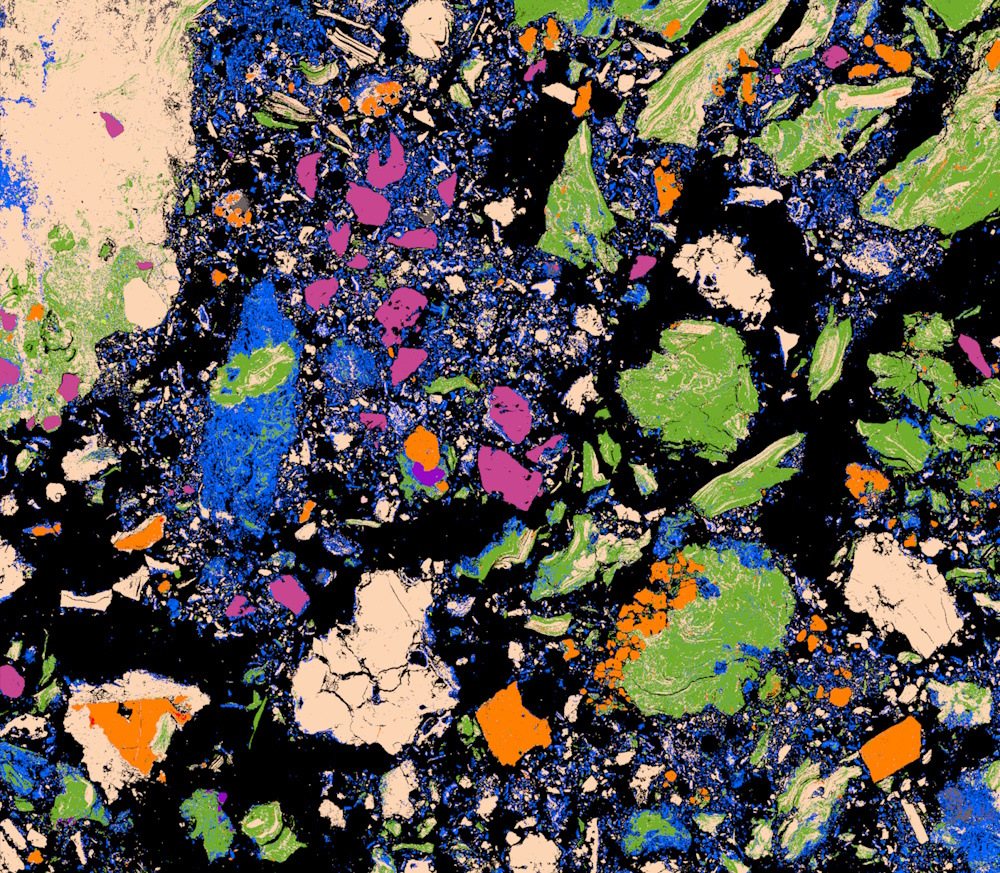
Processing & mineralogy
About
Rocks are made of minerals, and a crucial part of understanding mineralisation is understanding how the various critical metals are distributed within minerals in rocks.

Automated mineral map acquired using QEMSCAN of a 2 cm sample, showing various mineral phases including the REE-bearing phosphates monazite, apatite, and crandallite.
A crucial application for deep understanding of minerals in rocks is processing and geometallurgy. The cost effectiveness of extracting many critical elements from their mineral hosts can be the limiting factor in developing a resource. However, compared to the extraction of base metals the extraction of critical metals is in its infancy.
By understanding how critical elements are transported and concentrated in the minerals we can develop extraction techniques based on reversing these processes.







